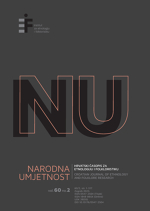Simbolika majmuna u Japanu: od posrednika između nebeskog i zemaljskog sveta, do predmeta poruge
Monkey Symbolism in Japan: From the Mediator between the Heavenly and Earthly World, to an Object of Ridicule
Author(s): Danijela VasićSubject(s): Cultural history, Customs / Folklore, Social history, Cultural Anthropology / Ethnology, Culture and social structure
Published by: Institut za etnologiju i folkloristiku
Keywords: Japan; Buddhism; Shinto; monkey; saru; oral literary tradition;
Summary/Abstract: The monkey is the only animal that has gone from a deity to an object of ridicule in Japanese culture. Ideas about the monkey are part of a variety of discourses, from religion and mythology to folklore, various types of art, and contemporary culture. Mythical representations of the monkey are a mixture of Buddhist and Taoist ideas that came from China and were added to the existing Shinto heritage. From this mixture of ideas, the guardian of the boundary between the celestial and earthly world becomes a god and a divine messenger, and gradually occupies an increasingly important place in beliefs, highlighting the apotropaic characteristics of this animal. It is closely associated with the mountain as a divine topos, but parallels with water, the sun and agriculture are also evident. This symbolism of the monkey has been incorporated into oral tradition. On the basis of various narrative forms, which are always on the border between oral and written, and always show Buddhist influences, the change of representations about the monkey can be traced. In the course of time, the monkey acquired increasingly negative connotations, losing its divine attributes and taking on the features of a trickster, until what ultimately remained was only an animal that the man regarded with contempt, derision and, finally, with a smile on their face.
Journal: Narodna umjetnost - Hrvatski časopis za etnologiju i folkloristiku
- Issue Year: 60/2023
- Issue No: 2
- Page Range: 119-138
- Page Count: 20
- Language: Serbian

